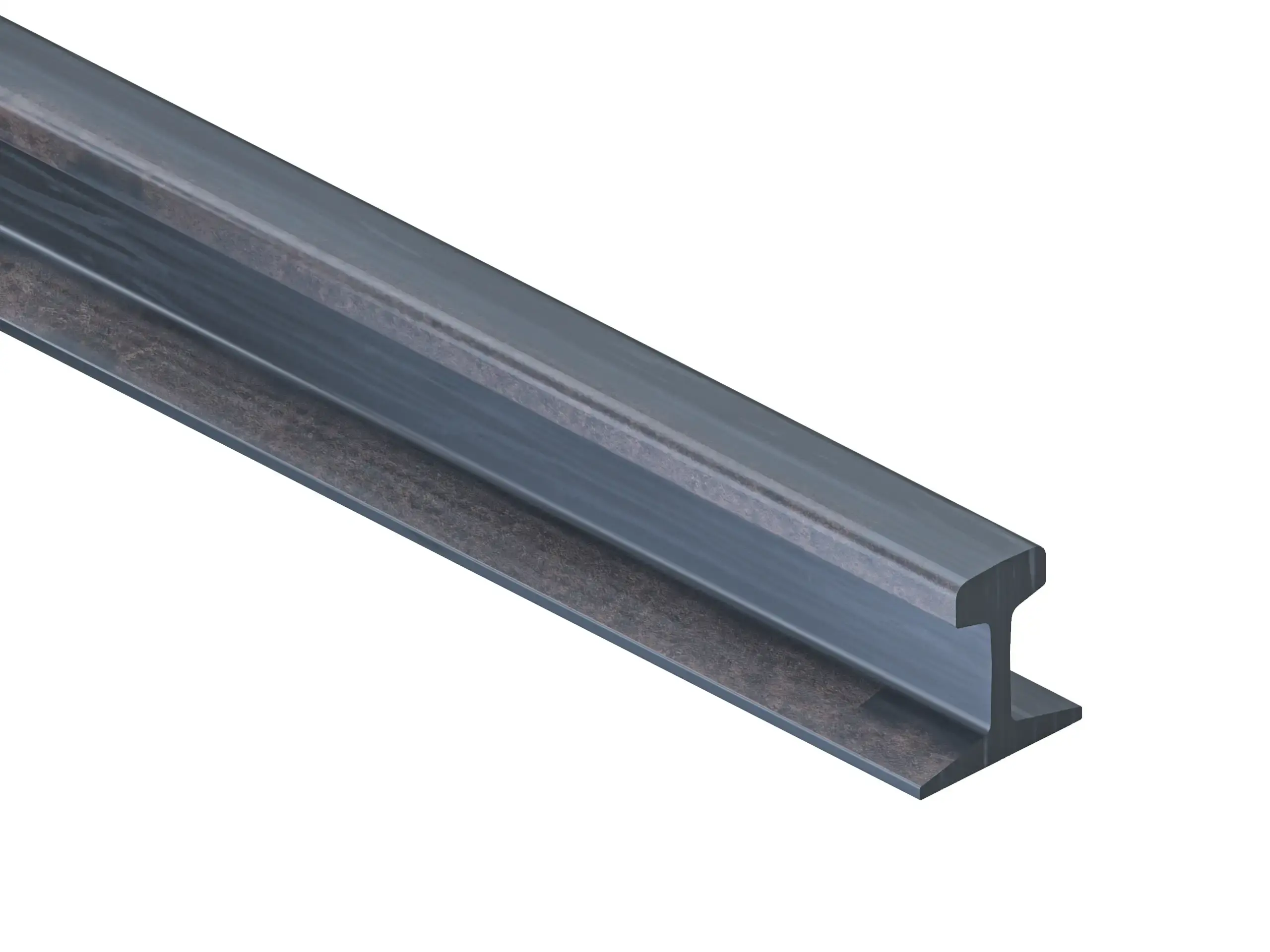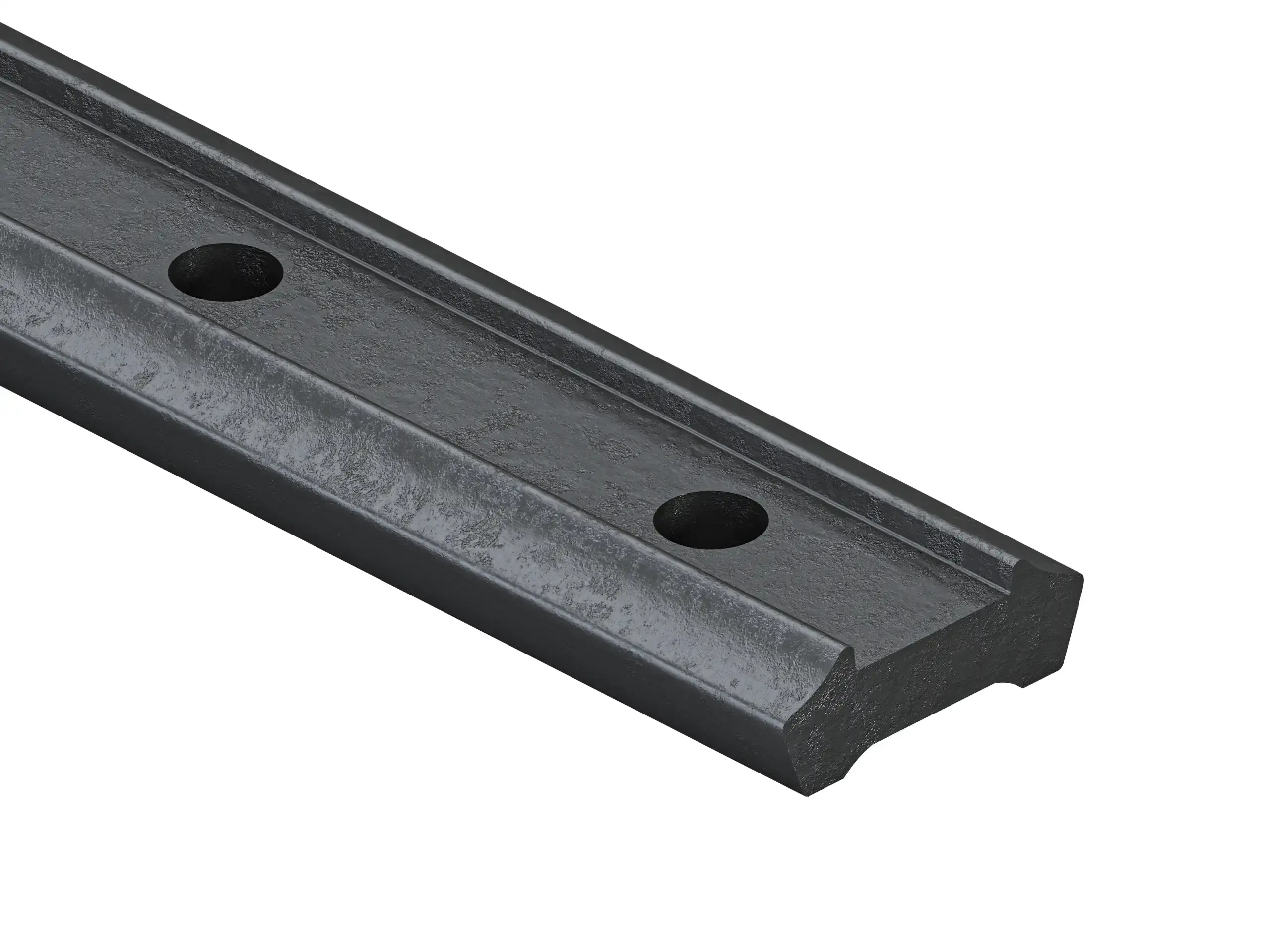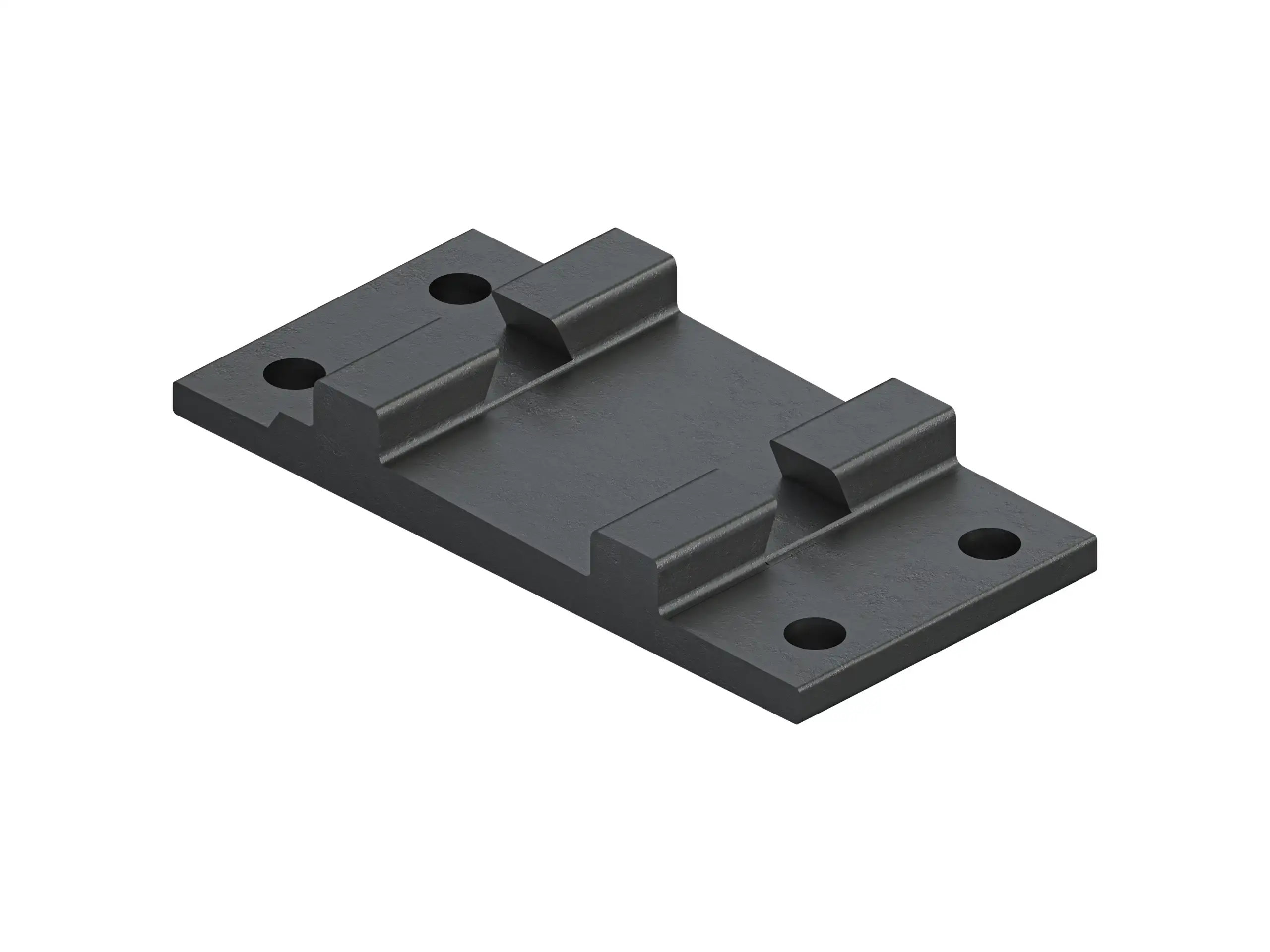Intermediate rails

Order online or enquire through the Rail Sales Department.
This is a rendered image. The real product will look different.
Select parameters
Rail profile Please select an option to see price and add to cart
Steel grade
Type of driling Please select an option to see price and add to cart
Length - L [mm] Please select an option to see price and add to cart
About delivery
- Personal pickup:
- If you pick up the rails with your own transport, please note that the rails are loaded from the top at our warehouse, and railway accessories are loaded with a forklift from the side.
- Oversized transport:
Only takes place during night hours (22:00-06:00).
- Transport by Moris:
Provide equipment and personnel for unloading the delivery.
Available delivery methods and costs will be displayed in the shopping cart during the order process.
Available delivery methods
Depending on the weight and length of the ordered products, we offer many convenient delivery methods.
We deliver orders starting from 1 item throughout Poland!
-
Self pick-up
You can collect the goods the next day after paying for the order.
-
Moris Transport
We will deliver the largest orders with our own transport.
-
Moris HDS
Delivery and crane unloading of products up to 7 m in length.
-
Rail transport
We will deliver rails with our own rolling stock. Pricing on individual request.
-
Parcel courier
Contact Customer Service if you would like to order a courier.
-
Pallet courier
We will soon enable the shipment of cut sections on pallets.
You will see the available delivery methods and costs in the cart while placing your order.
Flexible payment methods
Payment on Moris.eu is fast, convenient, and fully secure. We offer modern online payment methods such as Autopay, Apple Pay, Google Pay, BLIK, and card payments. For companies that prefer more traditional solutions, there is also the option of bank transfer based on a proforma invoice. We operate in accordance with international quality management standards – confirmed by the ISO 9001:2015 certificate.
-
Proforma invoice
Advance payment based on an issued invoice
-
BLIK
Mobile payment using a phone
-
Fast transfers
Support for the most popular banks in Poland
-
Digital wallets
Payment using Google Pay and Apple Pay
-
Credit/debit cards
Online payment by card: Visa, MasterCard, and others
Related Products
Description
We supply high-quality intermediate rails that meet the highest industry standards. Our range includes a wide assortment of such rails, available in various types and lengths to meet the specific needs and requirements of our customers. With Moris, you are assured that every order is not only access to a wide selection, but also a guarantee of professional service and technical support at the highest level.
Characteristics of intermediate rails
The production of intermediate rails is mainly carried out through a hot-rolling process, where steel is formed into precise shapes and dimensions at high temperatures. This provides them with exceptional strength and resistance to bending, crucial to their functionality.
The structure of the intermediate rails is designed to provide even load distribution and high resistance to abrasion and corrosion, which is important in industrial environments. The steel alloy used in the production of these components is carefully selected to ensure an optimal combination of strength, flexibility and durability.
During the production of intermediate rails, it is also important to maintain dimensional precision, which is achieved through the use of modern measurement and control technologies at every stage of the process. As a result, these rails are characterized by high dimensional accuracy, which is crucial in applications requiring precise assembly and structural stability.
Features and benefits of intermediate rails
Features of intermediate rails:
- High durability - Intermediate rails are made from high-quality steel, which provides them with exceptional resistance to mechanical loads.
- Resistance to abrasion and corrosion - special surface treatment and the use of suitable steel alloys guarantee protection from external factors.
- Structural flexibility - intermediate rails are designed to withstand a variety of operating conditions without compromising their structure.
Advantages of intermediate rails:
- Increased structural reliability - their strength and resistance to external factors guarantee the safety and durability of the structure.
- Minimal maintenance - long service life and corrosion resistance significantly reduce the need for regular maintenance and repairs.
- Cost optimization - high performance and minimal maintenance translate into lower overall operating costs.
Intermediate rail profiles
We offer intermediate rails with profiles S24, S30, S30 DIN and S39.
S24 intermediate rail profile
Features:
- Weight is about 24.4 kg/m.
- The height is 115 mm.
Advantages:
- Good strength under medium load.
- Suitable for lower traffic applications.
Disadvantages:
- Unsuitable for heavy loads and heavy rail traffic.
- Limited flexibility in applications with higher load variability.
S30 intermediate rail profile
Features:
- Weight is about 30.35 kg/m.
- Height is 120 mm.
Advantages:
- Higher strength than S24, better for medium loads.
- Versatile, good for different types of tracks.
Disadvantages:
- Heavier, which may require ground reinforcement.
- Less economical than lighter models.
S30 intermediate rail profile according to DIN5901
Features:
- Weight per meter similar to S30, but conforms to DIN standards.
- Height and width according to DIN standards.
Advantages:
- Meeting DIN standards ensures high quality and safety.
Disadvantages:
- May be more expensive than other non-DIN compliant rails.
S39 intermediate rail profile
Features:
- Weight is about 39.8 kg/m.
- Height is 133.35 mm
Advantages:
- Ideal for high loads and heavy traffic.
- Durable and durable under harsh conditions.
Disadvantages:
- Higher weight requires stronger base and construction.
- Higher cost compared to lighter rails.
Steel grades
We offer intermediate rails in 167HB, 700 and R200 steel.
167HB steel grade
Features:
- Brinell hardness is approximately 167 HB.
- Good ductility and tensile strength.
- Used in rail production where moderate hardness and good machinability are required.
Advantages:
- Easy to machine, including welding and cutting.
- Good wear resistance under moderate load.
Disadvantages:
- Less resistance to extreme loads and abrasion.
- May require more frequent maintenance under heavy use.
Steel grade 700
Features:
- High strength, typical of steels with a yield strength of about 700 MPa.
- Used in situations requiring exceptional strength.
Advantages:
- Excellent load and abrasion resistance.
- Less tendency to deform under weight.
Disadvantages:
- More difficult to machine compared to less hard grades.
- Higher production cost and potentially higher final product price.
R200 steel grade
Features:
- Steel with relatively low hardness, often used in the production of standard railroad rails.
- Good formability and flexibility.
Advantages:
- Ease of forming and assembly.
- Good fatigue resistance in standard use.
Disadvantages:
- Less resistant to high loads and abrasion than harder steel.
- May not be suitable for extreme conditions such as heavy industry or heavy rail traffic.
Intermediate rail applications
S24-profile rails are commonly used in the construction of smaller railroad structures where high loads are not required. Their main use is in tracks with less traffic, such as tracks in industrial plants, mines or storage areas. They are ideal for applications where economy rather than heavy use is the priority.
S30 profile rails are more versatile, finding use in regional railroads where loads are moderate but greater strength is required than with S24 rails. They are suitable for moderately loaded tracks, such as smaller industrial lines, logistics parks or warehouse areas with medium traffic.
S30 DIN profile rails, which meet DIN standards, are often used in European railroad systems, where standards and specifications in accordance with European standards are required. Their use ranges from regional railroads to specialized industrial tracks, where interoperability and compliance with EU standards are important.
S39 profile rails are rails designed for heavy industrial conditions and mainline railroads. They are ideal for heavy-duty trackways such as heavy industry, large transportation hubs, ports or heavily used rail lines. Because of their strength, they are chosen in situations where durability and resistance to heavy use are key.
Tips for investors
- Determine requirements - define load requirements and operating conditions to select the right rail profile.
- Material selection - pay attention to the steel grade (e.g., 167HB, 700, R200) in terms of required strength and durability.
- Analysis of suppliers - choose reputable suppliers offering products that comply with applicable standards and certifications.
- Verification of standards compliance - make sure that the selected rails meet standards and required standards.
- Evaluate total cost - consider not only the purchase price, but also the cost of installation, maintenance and potential repairs.
Storage of intermediate rails
Proper storage of intermediate rails is key to maintaining their quality and functionality. Our recommendations:
- Corrosion protection - store rails in a dry and well-ventilated place to avoid corrosion.
- Stable placement - make sure the rails are stably placed to prevent them from falling over and being damaged.
- Proper padding - use wooden or rubber pads to distribute weight evenly and protect against scratches.
- Maintain access - maintain walkways between stacks of rails to allow easy access.
- Marking and identification - mark each stack to easily identify different types and sizes of rails.
- Regular inspections - regularly check the condition of rails to detect any damage or signs of corrosion.
Did you know
- The first intermediate rails were used in the early 19th century, significantly contributing to the revolution in rail transportation.
- The production of intermediate rails uses different grades of steel, including specialized alloys, to meet different strength and flexibility requirements.
- Intermediate rails are manufactured in accordance with international standards, such as DIN standards in Europe, ensuring their versatility and safety.
- Modern rail production methods, such as hot rolling and heat treatment, significantly increase their durability and strength.
Intermediate rails - why with us?
At Moris online steel wholesaler, we offer you a wide selection of intermediate rails to suit a variety of needs and technical requirements. Our offer combines advanced product quality with professional customer service, guaranteeing satisfaction and support at every stage of the transaction. In addition, we provide flexible delivery options for fast and efficient order processing, regardless of the scale of the project.



